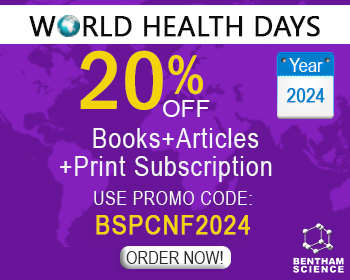Abstract
Traumatic brain injury (TBI) is a serious cause of disability and death among young and adult individuals, displaying complex pathophysiology including cellular and molecular mechanisms that are not fully elucidated. Many experimental and clinical studies investigated the potential relationship between TBI and the process by which neurons are formed in the brain, known as neurogenesis. Currently, there are no available treatments for TBI’s long-term consequences being the search for novel therapeutic targets, a goal of highest scientific and clinical priority. Some studies evaluated the benefits of treatments aimed at improving neurogenesis in TBI. In this scenario, herein, we reviewed current pre-clinical studies that evaluated different approaches to improving neurogenesis after TBI while achieving better cognitive outcomes, which may consist in interesting approaches for future treatments.
Keywords: Traumatic brain injury, neurogenesis, hippocampus, models, animal, dentate gyrus, therapeutics.
[http://dx.doi.org/10.1155/2016/1347987] [PMID: 27274873]
[http://dx.doi.org/10.4103/1673-5374.131567] [PMID: 25206873]
[http://dx.doi.org/10.1007/s11910-018-0812-z] [PMID: 29372464]
[http://dx.doi.org/10.1016/j.nec.2006.10.007] [PMID: 17244562]
[http://dx.doi.org/10.1002/hipo.10103] [PMID: 12440573]
[http://dx.doi.org/10.1055/s-0038-1626005]
[http://dx.doi.org/10.3233/NRE-2007-22502] [PMID: 18162698]
[http://dx.doi.org/10.3389/fnins.2016.00332] [PMID: 27531972]
[http://dx.doi.org/10.1016/j.wneu.2015.10.020] [PMID: 26485419]
[http://dx.doi.org/10.1089/neu.2010.1358] [PMID: 20504161]
[http://dx.doi.org/10.1016/S1388-2457(03)00258-X] [PMID: 14706464]
[http://dx.doi.org/10.1111/j.1750-3639.2004.tb00052.x] [PMID: 15193031]
[http://dx.doi.org/10.1089/neu.2014.3352] [PMID: 25158206]
[http://dx.doi.org/10.1007/s12035-018-1428-7] [PMID: 30554385]
[http://dx.doi.org/10.1016/S0140-6736(74)91639-0] [PMID: 4136544]
[http://dx.doi.org/10.1097/00005373-199609000-00022] [PMID: 8810973]
[http://dx.doi.org/10.1038/nrdp.2016.84] [PMID: 27853132]
[http://dx.doi.org/10.1038/srep21793] [PMID: 26898165]
[http://dx.doi.org/10.1089/neu.2010.1563] [PMID: 21463148]
[http://dx.doi.org/10.1007/s13311-012-0107-z] [PMID: 22362424]
[http://dx.doi.org/10.1089/neu.2015.4097] [PMID: 26414411]
[http://dx.doi.org/10.1016/j.expneurol.2015.08.018] [PMID: 26342753]
[http://dx.doi.org/10.1159/000369091] [PMID: 25678047]
[http://dx.doi.org/10.1016/j.pneurobio.2015.12.006] [PMID: 26855369]
[http://dx.doi.org/10.1097/00001756-199512150-00010] [PMID: 8741746]
[http://dx.doi.org/10.1523/JNEUROSCI.16-06-02027.1996] [PMID: 8604047]
[http://dx.doi.org/10.1002/ana.10262] [PMID: 12210782]
[http://dx.doi.org/10.1097/NEN.0000000000000092] [PMID: 25003234]
[http://dx.doi.org/10.1016/j.brainresrev.2007.01.010] [PMID: 18030688]
[http://dx.doi.org/10.1076/jhin.11.4.325.8531] [PMID: 12557654]
[http://dx.doi.org/10.1002/cne.901240303] [PMID: 5861717]
[http://dx.doi.org/10.1523/JNEUROSCI.04-06-01429.1984] [PMID: 6726341]
[http://dx.doi.org/10.1016/j.jns.2016.10.052] [PMID: 27838002]
[PMID: 20178043]
[http://dx.doi.org/10.1007/s12035-016-9922-2] [PMID: 27165290]
[http://dx.doi.org/10.1002/jbio.201400069] [PMID: 25196192]
[http://dx.doi.org/10.1517/13543784.2015.1021919] [PMID: 25727893]
[http://dx.doi.org/10.3389/fncel.2017.00055] [PMID: 28293177]
[PMID: 20496368]
[http://dx.doi.org/10.1016/j.expneurol.2012.09.012] [PMID: 23022454]
[http://dx.doi.org/10.1016/j.expneurol.2014.05.016] [PMID: 24861442]
[http://dx.doi.org/10.1007/s10571-015-0295-2] [PMID: 26886755]
[http://dx.doi.org/10.1371/journal.pone.0059250] [PMID: 23555640]
[http://dx.doi.org/10.1016/j.expneurol.2014.08.015] [PMID: 25151457]
[http://dx.doi.org/10.1089/neu.2014.3545] [PMID: 25242459]
[http://dx.doi.org/10.1155/2016/8072156] [PMID: 28018679]
[http://dx.doi.org/10.1177/0963689717714099] [PMID: 28933222]
[http://dx.doi.org/10.1073/pnas.2234031100] [PMID: 14581618]
[http://dx.doi.org/10.1016/j.mcn.2005.10.006] [PMID: 16297637]
[http://dx.doi.org/10.1016/j.mcn.2011.08.009] [PMID: 21906677]
[http://dx.doi.org/10.1089/neu.2010.1579] [PMID: 21275797]
[http://dx.doi.org/10.3171/2013.8.PEDS13154] [PMID: 24053630]
[http://dx.doi.org/10.1021/acsmedchemlett.0c00006] [PMID: 33062159]
[http://dx.doi.org/10.1016/j.drudis.2013.07.001] [PMID: 23850704]
[http://dx.doi.org/10.2174/138955712802762103] [PMID: 22512563]
[http://dx.doi.org/10.1016/0005-2760(77)90126-6] [PMID: 889862]
[http://dx.doi.org/10.1016/0014-5793(76)80996-9] [PMID: 16386050]
[http://dx.doi.org/10.1039/p19760001165] [PMID: 945291]
[http://dx.doi.org/10.1016/j.ejmech.2017.09.020] [PMID: 28987600]
[http://dx.doi.org/10.1016/j.nurt.2009.11.003] [PMID: 20129498]
[http://dx.doi.org/10.3390/molecules26102838] [PMID: 34064670]
[http://dx.doi.org/10.1089/neu.2007.0288] [PMID: 17610353]
[http://dx.doi.org/10.1089/neu.2007.0369] [PMID: 18260796]
[http://dx.doi.org/10.1007/s12272-013-0238-8] [PMID: 24129616]
[http://dx.doi.org/10.2174/0929867324666170712165042] [PMID: 28707591]
[http://dx.doi.org/10.1016/j.bcp.2017.08.005] [PMID: 28800956]
[http://dx.doi.org/10.1371/journal.pone.0027290] [PMID: 22076148]
[http://dx.doi.org/10.1176/appi.ajp.2015.14101336] [PMID: 25930134]
[PMID: 19300578]
[http://dx.doi.org/10.1179/1743132813Y.0000000164] [PMID: 23485052]
[http://dx.doi.org/10.1038/nrc4033] [PMID: 26469144]
[http://dx.doi.org/10.4081/oncol.2019.411] [PMID: 31044029]
[http://dx.doi.org/10.1176/ajp.122.5.509] [PMID: 5319766]
[http://dx.doi.org/10.1517/17460441.2014.907790] [PMID: 24738878]
[http://dx.doi.org/10.1097/00004850-199403001-00004] [PMID: 8021435]
[http://dx.doi.org/10.1016/0028-3908(92)90100-4] [PMID: 1279447]
[http://dx.doi.org/10.1038/npp.1993.33] [PMID: 8512621]
[http://dx.doi.org/10.1016/j.brainresbull.2018.09.002] [PMID: 30236533]
[http://dx.doi.org/10.1089/neu.2010.1648] [PMID: 21175261]
[http://dx.doi.org/10.1016/j.neurobiolaging.2009.08.008] [PMID: 19767127]
[http://dx.doi.org/10.1227/NEU.0000000000000577] [PMID: 25255260]
[http://dx.doi.org/10.1007/s00401-011-0908-x] [PMID: 22083255]
[http://dx.doi.org/10.1073/pnas.86.3.779] [PMID: 2915977]
[http://dx.doi.org/10.1016/0014-5793(90)81322-F] [PMID: 2253778]
[http://dx.doi.org/10.1152/ajprenal.00562.2015] [PMID: 26962108]
[http://dx.doi.org/10.1074/jbc.270.8.3656] [PMID: 7876104]
[http://dx.doi.org/10.1042/bj2960373] [PMID: 8257427]
[http://dx.doi.org/10.1016/j.phrs.2018.07.006] [PMID: 29990624]
[http://dx.doi.org/10.1172/JCI118484] [PMID: 8609242]
[PMID: 10565814]
[http://dx.doi.org/10.1016/0014-5793(91)81062-D] [PMID: 1915845]
[http://dx.doi.org/10.1016/j.neuroscience.2015.09.017] [PMID: 26363149]
[http://dx.doi.org/10.3171/2016.3.JNS152699] [PMID: 28245754]
[http://dx.doi.org/10.1016/0167-0115(93)90244-3] [PMID: 8385791]
[http://dx.doi.org/10.2174/1389203718666170203150344] [PMID: 28164758]
[http://dx.doi.org/10.1007/s13311-014-0286-x] [PMID: 24957202]
[http://dx.doi.org/10.1021/jm049715t] [PMID: 15537354]
[http://dx.doi.org/10.1016/j.bbr.2018.10.010] [PMID: 30296528]
[http://dx.doi.org/10.1016/j.ejphar.2017.02.016] [PMID: 28192099]
[http://dx.doi.org/10.1523/JNEUROSCI.3547-05.2006] [PMID: 16707781]
[http://dx.doi.org/10.1002/stem.1516] [PMID: 23940017]
[http://dx.doi.org/10.1177/1073858412446634] [PMID: 22585341]
[http://dx.doi.org/10.1016/0024-3205(74)90030-7] [PMID: 4621010]
[http://dx.doi.org/10.1016/S0278-5846(82)80124-3] [PMID: 6761764]
[http://dx.doi.org/10.1016/0006-8993(91)91645-H] [PMID: 2054604]
[http://dx.doi.org/10.1017/S1461145798001096] [PMID: 11281943]
[http://dx.doi.org/10.1167/iovs.02-1101] [PMID: 14638711]
[http://dx.doi.org/10.1007/s12031-019-01263-6] [PMID: 30684239]
[http://dx.doi.org/10.1073/pnas.1105114108] [PMID: 21555574]
[http://dx.doi.org/10.1002/anie.201916578] [PMID: 31880381]
[http://dx.doi.org/10.1073/pnas.1119201109] [PMID: 22331903]
[http://dx.doi.org/10.1007/s11064-020-03169-x] [PMID: 33222058]
[http://dx.doi.org/10.1016/j.nbd.2015.01.009] [PMID: 25862938]
[http://dx.doi.org/10.1016/j.cell.2010.06.018] [PMID: 20603013]
[http://dx.doi.org/10.1021/jm401919s] [PMID: 24697290]
[http://dx.doi.org/10.1016/j.neuropharm.2018.09.024]
[http://dx.doi.org/10.1016/j.celrep.2014.08.030] [PMID: 25220467]
[http://dx.doi.org/10.1089/neu.2013.3135] [PMID: 24070637]
[http://dx.doi.org/10.1016/j.cell.2014.07.040] [PMID: 25215490]
[http://dx.doi.org/10.1111/cns.12539] [PMID: 27018006]
[PMID: 31291871]
[http://dx.doi.org/10.1007/s11481-013-9501-5] [PMID: 24057103]
[http://dx.doi.org/10.1172/JCI16618] [PMID: 14561705]
[http://dx.doi.org/10.1155/2017/2923182] [PMID: 29181034]
[http://dx.doi.org/10.1111/j.1469-7580.2005.00447.x] [PMID: 16185246]
[http://dx.doi.org/10.3389/fneur.2018.00592] [PMID: 30083129]
[http://dx.doi.org/10.3389/fnins.2016.00052] [PMID: 26941597]
[http://dx.doi.org/10.1179/016164110X12807570510013] [PMID: 20810026]
[http://dx.doi.org/10.3390/ijms18071418] [PMID: 28671601]
[PMID: 29115443]
[http://dx.doi.org/10.1016/j.brainres.2009.07.077] [PMID: 19646970]
[http://dx.doi.org/10.3171/2009.9.JNS09844] [PMID: 19817538]
[http://dx.doi.org/10.3171/2010.10.JNS10925] [PMID: 21073254]
[http://dx.doi.org/10.1126/science.275.5302.964] [PMID: 9020076]
[http://dx.doi.org/10.1038/nprot.2015.107] [PMID: 26448359]
[http://dx.doi.org/10.1111/j.1538-7836.2012.04835.x] [PMID: 22738133]
[http://dx.doi.org/10.1007/s00392-011-0327-y] [PMID: 21633921]
[http://dx.doi.org/10.1038/s41598-017-04153-2] [PMID: 28646184]
[http://dx.doi.org/10.1016/j.expneurol.2014.11.014] [PMID: 25483396]
[http://dx.doi.org/10.1016/j.cell.2009.03.045] [PMID: 19379690]
[http://dx.doi.org/10.12659/MSM.907160] [PMID: 29150595]
[http://dx.doi.org/10.1126/scitranslmed.3004660] [PMID: 23175708]
[http://dx.doi.org/10.1007/s10517-011-1187-1] [PMID: 22268062]
[http://dx.doi.org/10.1371/journal.pone.0074857] [PMID: 24023965]
[http://dx.doi.org/10.1016/j.brainres.2010.10.063] [PMID: 20977892]
[http://dx.doi.org/10.4103/1673-5374.131596] [PMID: 25206892]
[http://dx.doi.org/10.1038/mp.2009.110] [PMID: 19859069]
[http://dx.doi.org/10.1186/scrt151] [PMID: 23290300]
[http://dx.doi.org/10.1002/stem.2310] [PMID: 26840479]
[http://dx.doi.org/10.1089/neu.2019.6422] [PMID: 31298621]
[http://dx.doi.org/10.1155/2013/620837] [PMID: 23710117]
[http://dx.doi.org/10.1016/S0006-3223(97)00394-6] [PMID: 9646895]
[http://dx.doi.org/10.1155/2017/5841814] [PMID: 28848607]
[http://dx.doi.org/10.3390/ijms18112312] [PMID: 29099059]
[PMID: 28430363]
[http://dx.doi.org/10.1177/1545968318809916] [PMID: 30499355]
[PMID: 31491768]


























